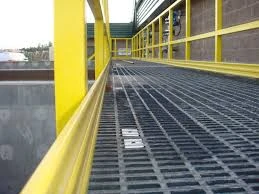
-
 Afrikaans
Afrikaans -
 Albanian
Albanian -
 Amharic
Amharic -
 Arabic
Arabic -
 Armenian
Armenian -
 Azerbaijani
Azerbaijani -
 Basque
Basque -
 Belarusian
Belarusian -
 Bengali
Bengali -
 Bosnian
Bosnian -
 Bulgarian
Bulgarian -
 Catalan
Catalan -
 Cebuano
Cebuano -
 China
China -
 China (Taiwan)
China (Taiwan) -
 Corsican
Corsican -
 Croatian
Croatian -
 Czech
Czech -
 Danish
Danish -
 Dutch
Dutch -
 English
English -
 Esperanto
Esperanto -
 Estonian
Estonian -
 Finnish
Finnish -
 French
French -
 Frisian
Frisian -
 Galician
Galician -
 Georgian
Georgian -
 German
German -
 Greek
Greek -
 Gujarati
Gujarati -
 Haitian Creole
Haitian Creole -
 hausa
hausa -
 hawaiian
hawaiian -
 Hebrew
Hebrew -
 Hindi
Hindi -
 Miao
Miao -
 Hungarian
Hungarian -
 Icelandic
Icelandic -
 igbo
igbo -
 Indonesian
Indonesian -
 irish
irish -
 Italian
Italian -
 Japanese
Japanese -
 Javanese
Javanese -
 Kannada
Kannada -
 kazakh
kazakh -
 Khmer
Khmer -
 Rwandese
Rwandese -
 Korean
Korean -
 Kurdish
Kurdish -
 Kyrgyz
Kyrgyz -
 Lao
Lao -
 Latin
Latin -
 Latvian
Latvian -
 Lithuanian
Lithuanian -
 Luxembourgish
Luxembourgish -
 Macedonian
Macedonian -
 Malgashi
Malgashi -
 Malay
Malay -
 Malayalam
Malayalam -
 Maltese
Maltese -
 Maori
Maori -
 Marathi
Marathi -
 Mongolian
Mongolian -
 Myanmar
Myanmar -
 Nepali
Nepali -
 Norwegian
Norwegian -
 Norwegian
Norwegian -
 Occitan
Occitan -
 Pashto
Pashto -
 Persian
Persian -
 Polish
Polish -
 Portuguese
Portuguese -
 Punjabi
Punjabi -
 Romanian
Romanian -
 Russian
Russian -
 Samoan
Samoan -
 Scottish Gaelic
Scottish Gaelic -
 Serbian
Serbian -
 Sesotho
Sesotho -
 Shona
Shona -
 Sindhi
Sindhi -
 Sinhala
Sinhala -
 Slovak
Slovak -
 Slovenian
Slovenian -
 Somali
Somali -
 Spanish
Spanish -
 Sundanese
Sundanese -
 Swahili
Swahili -
 Swedish
Swedish -
 Tagalog
Tagalog -
 Tajik
Tajik -
 Tamil
Tamil -
 Tatar
Tatar -
 Telugu
Telugu -
 Thai
Thai -
 Turkish
Turkish -
 Turkmen
Turkmen -
 Ukrainian
Ukrainian -
 Urdu
Urdu -
 Uighur
Uighur -
 Uzbek
Uzbek -
 Vietnamese
Vietnamese -
 Welsh
Welsh -
 Bantu
Bantu -
 Yiddish
Yiddish -
 Yoruba
Yoruba -
 Zulu
Zulu
inserting rock bits techniques and strategies for efficient ...
Inserting Rock Bits Techniques and Strategies for Efficient Operation
In the world of drilling, the insertion of rock bits is a critical process that can determine the efficiency and effectiveness of reaching a target depth. Rock bits, designed to cut through various geological formations, play a pivotal role in the drilling process, whether for oil, gas, or mineral extraction. Clean insertion and optimal usage of these bits can significantly cut down costs, improve productivity, and extend the lifespan of drilling equipment. This article will explore various techniques and strategies to enhance the insertion of rock bits for more efficient drilling operations.
Understanding Rock Bits
Rock bits come in different types—roller cone bits, diamond bits, and PDC (polycrystalline diamond compact) bits being the most common. Each type has its own set of conditions under which it performs best. For instance, roller cone bits are ideal for softer formations while diamond bits excel in hard and abrasive materials. Understanding the geological conditions of the drilling site is crucial before selecting the appropriate rock bit.
Preparation and Planning
Effective planning and preparation are essential in the insertion process. Before beginning the insertion of rock bits, it's important to conduct a thorough geological survey. This analysis will allow drillers to predict the rock formations they will encounter and, subsequently, choose the most suitable bit.
Proper maintenance of the drilling rig and associated equipment is also a critical consideration. Ensuring that the drilling assembly is in optimal condition helps minimize complications during operation and can lead to smoother insertion phases.
Techniques for Efficient Insertion
inserting rock bits techniques and strategies for efficient ...

1. Optimal Weight on Bit (WOB) Applying the correct weight on the bit is fundamental for efficient drilling. Too much weight can cause excessive wear and tear or even lead to bit failure, while too little can result in inadequate penetration rates. Monitoring and adjusting the WOB during insertion is key to maintaining balance and efficiency.
2. Rotational Speed The speed at which the bit rotates significantly influences the type of rock it can effectively penetrate. Understanding the optimal RPM (revolutions per minute) for the specific rock formation ensures that the bit is used effectively without risking damage.
3. Cooling Systems Utilizing effective cooling systems can help prevent overheating of the bit during the drilling process. Common methods include mud circulation systems that not only lubricate the bit but also help in effectively removing cuttings from the hole, thereby providing more straightforward insertion.
4. Bit Replacement Strategy Regularly monitoring the condition of the rock bit can help determine the right time for replacement. A proactive approach to replacing worn bits minimizes downtime and ensures consistent operational efficiency.
Adapting to Challenges
Drilling operations often face unforeseen challenges, such as sudden changes in geological conditions. Being prepared to adapt the drilling strategy and techniques in response to these changes is vital. Continuous training and updates for the drilling crew on the latest technology and best practices can significantly improve response time and problem-solving abilities on-site.
Conclusion
Efficiently inserting rock bits requires a multifaceted strategy involving careful planning, understanding of geological conditions, and the application of various techniques during drilling operations. By implementing these strategies, drilling operators can enhance productivity, reduce costs, and ensure sustainable drilling practices. With the right approach, the insertion of rock bits can be transformed from a routine task into a streamlined and efficient operation that meets the demands of today’s industry.
Latest news
-
High-Quality Fiberglass Car Bodies Durable GRP Car & Boat Body SolutionsNewsJul.08,2025
-
High-Quality Fiberglass Dual Lamination Product Manufacturer Durable FRP & GRP Dual Lamination SolutionsNewsJul.08,2025
-
Rectangular Tank with Dimensions for GRP Calculation Custom Fiberglass GRP Rectangular TanksNewsJul.07,2025
-
High-Quality Fiberglass Weir Custom FRP Weir & Fiberglass Tanks ManufacturerNewsJul.07,2025
-
CPVC FRP Pipe A Reliable Choice for Industrial Applications High Strength & Corrosion ResistanceNewsJul.07,2025
-
Fiberglass Scrubber for Effective Cleaning and Stain Removal – Superior Performance in Various ApplicationsNewsJul.06,2025









